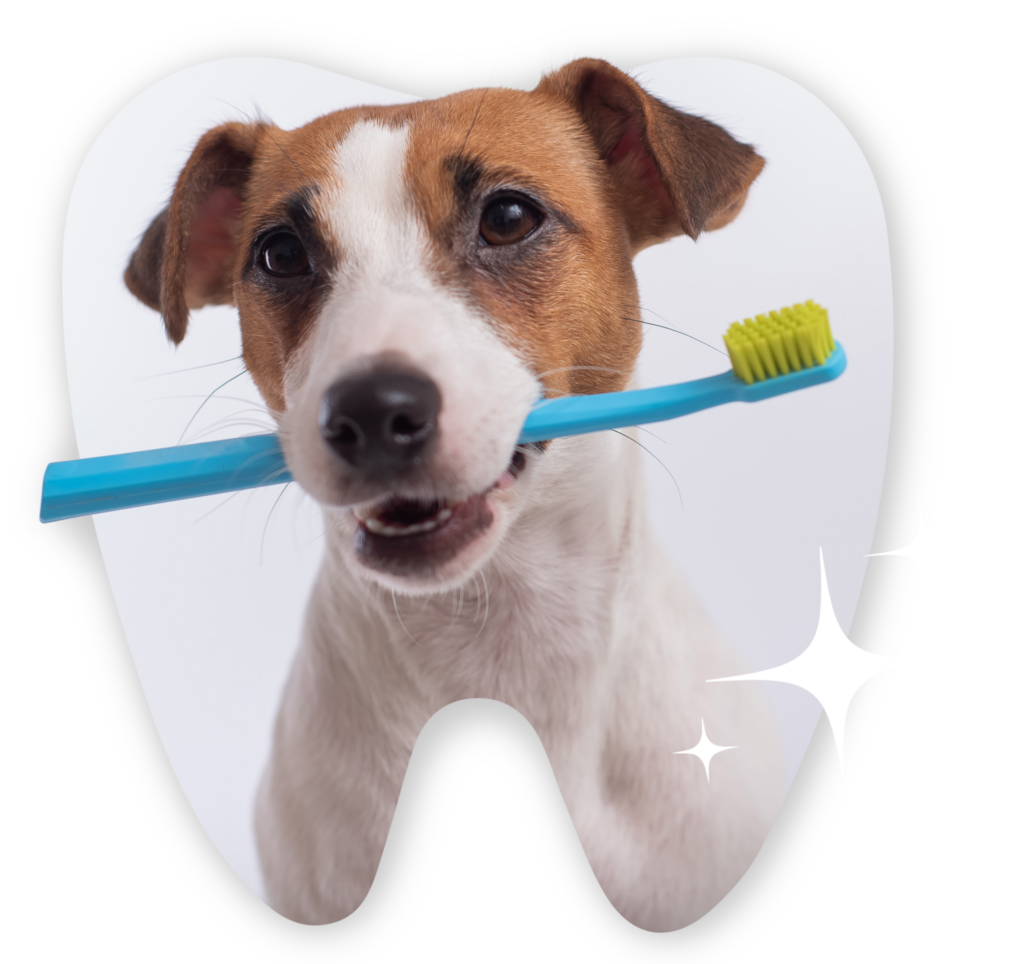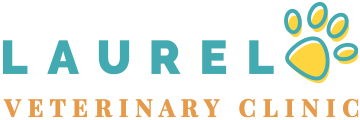Dental Days Deal
$100 off Dental Cleanings
For new and existing clients!
Call (303) 469-5363 to schedule a cleaning today!

2/12 2024 – 3/15 2024
*Not valid with any other offer. Canine and Feline only. Not redeemable for cash. May use offer on multiple pets within the same household.
At Laurel Veterinary Clinic, we consider all aspects of your pet’s wellness. Dental care is often overlooked but is extremely important to overall pet health and wellbeing. That is why we offer full pet dental care services including dog and cat teeth cleaning and dental radiology in the Broomfield, CO, area. We recommend annual professional dental exams and cleanings for adult pets to ensure there are no underlying dental issues.
Signs of Dental Disease
The American Veterinary Dental College states 80% of dogs and 70% of cats show signs of oral disease by the age of three years old. The following are common signs that your pet may be having dental issues:
Bad breath
Broken, loose or missing teeth
Discoloration or tartar build-up
Excessive chewing or drooling
Reduced appetite or inability to chew
Swelling and bleeding in or around the mouth

Pet Dental Care FAQs
Here is what to expect during a pet dental appointment at Laurel Veterinary Clinic.
What does professional dental care entail?
When pets arrive at our facility for their dental care procedure, they will first be examined by the veterinarian. We will also run laboratory bloodwork to ensure there are no underlying health issues that may interfere with general anesthesia.
Once the patient is cleared by the veterinarian, a technician will place an IV catheter to allow for the administration of fluids and anesthetic medications required for the procedure. An injectable dose of antibiotics may be provided on a case-by-case basis.
Each patient will be placed under a light plane of general anesthesia to allow for a comprehensive exam, radiographs, and cleaning. Once the veterinarian evaluates the teeth, lips, gums, and tongue, each tooth will be thoroughly cleaned and polished. Before waking the pet from anesthesia, a fluoride and sealant treatment will be applied to the teeth to protect the enamel.
The dental care procedure is a same-day procedure, meaning patients will be discharged later that day and recover at home. Any discharge instructions, pain management plans, and follow-up exams will be discussed at the time of discharge.
Why are dental x-rays important?
Dental radiology (ie. x-rays) is an important diagnostic tool for veterinarians to accurately and completely evaluate a pet’s oral health. About 50% of the tooth is underneath the gumline, making it impossible to effectively evaluate the health of the teeth and bones without a tool, such as an x-ray. X-rays uncover any hidden painful issues, such as root abscesses, root fractures, severe bone loss, and cystic lesions and allow the veterinarian to develop an appropriate therapeutic plan.
What is the dog/cat teeth cleaning procedure?
STEP 1: SUPRAGINGIVAL CLEANING
In the first step of the cleaning, tartar and plaque above the gumline is removed with an ultrasonic scaler.
STEP 2: SUBGINGIVAL CLEANING
This is considered the most important part of the cleaning as subgingival plaque and calculus are the cause of periodontal disease, which is the most common ailment in pets. During this step, the plaque and calculus build-up from under the gumline is removed.
STEP 3: RADIOGRAPHS
Radiographs are taken of the entire mouth to allow the veterinarian to visualize every tooth and detect issues such as retained roots, root abscesses, bone loss, and infection.
STEP 4: ASSESSMENT
At this point, the veterinarian can evaluate the entire oral cavity and the health of the teeth and record any abnormalities on the dental record. Common abnormalities detected at this stage include tongue or lip lesions, deep pockets in the gums, and loose, broken or discolored teeth.
STEP 5: POLISHING
Each tooth is polished to smooth out the tooth surface, effectively preventing plaque from adhering to the teeth.
STEP 6: THERAPEUTIC PLAN
A customized therapeutic plan will be developed by the veterinarian depending on their findings during the oral examination and review of the radiographs. Common treatments include tooth extraction, bonded sealants of fractures, and local antibiotic treatments.
STEP 7: PREVENTION
Once the procedure has finished, a team member will discuss discharge instructions and future at-home dental hygiene, as well as make any specific recommendations based on your pet’s history.


